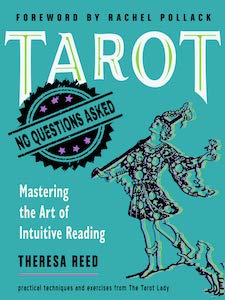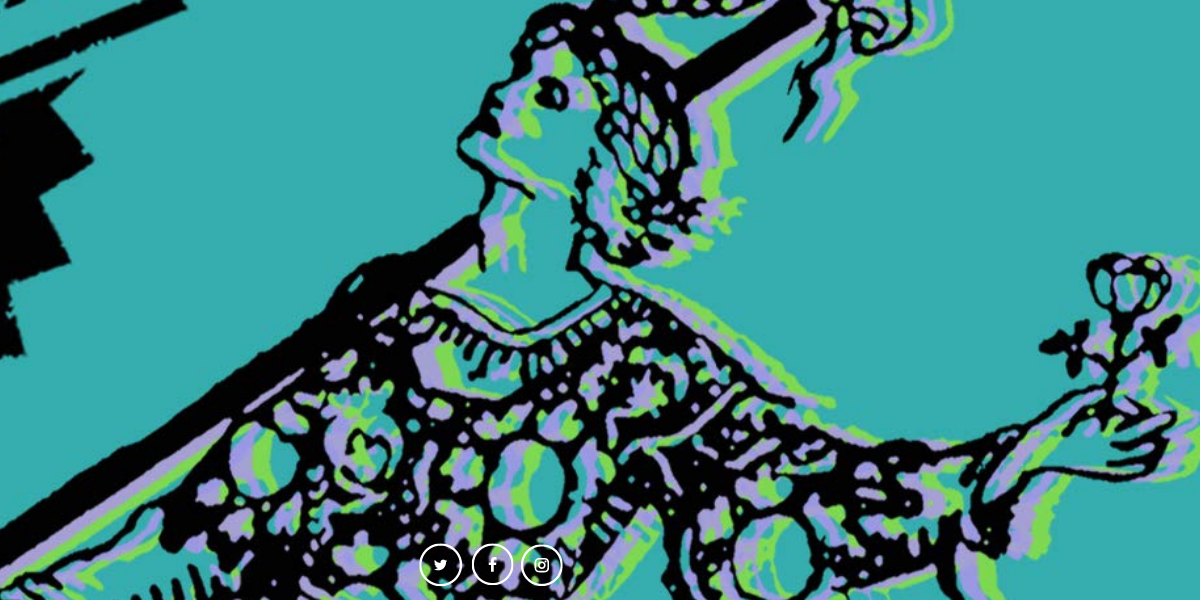
Tarot No Questions Asked: Mastering the Art of Intuitive Reading, by Theresa Reed
Weiser Books, 9781578637133, 304 pages, September 2020
Theresa Reed is clearly on a roll! Tarot No Questions Asked: Mastering the Art of Intuitive Reading, published in September 2020, is her third book published in a fourteen month period. Tarot for Troubled Times: Confront Your Shadow, Heal Your Self & Transform the World, co-authored with Shaheen Miro, was published in July 2019, and Astrology for Real Life: A Workbook for Beginners (A No B.S. Guide for the Astro-Curious) in October 2019. I enjoyed this third book so much I ordered the first two immediately after starting to read it!
Here’s why I loved Reed’s book. First, I vibe with her attitude of empowering others. She wants her readers to benefit from all her experience and generously offers the nuggets of her experience. Second, she expresses herself clearly and simply, without oversimplifying or underestimating the reader. Third, she gives you clear directions throughout. (To begin, she instructs you to get a deck and a journal or two and to journal daily.) Finally, her style of writing makes her easy to read. She uses short sentences — often, very short. She does not hold back on her personal anecdotes. And she lets her sense of humor shine. All this makes her very easy and very entertaining to read.
The book is divided mainly into three parts. Part 1: Tarot Basics covers the 78 cards. I like how she discusses each card – what it is and what it is not — and then offers three additional exercises that really teaches the meaning of the card: (1) embodiment practice, (2) a question to ponder, and a (3) Tarotcise (a tarot exercise). For example, for the major arcana card Death (my favorite, apt since I have my Sun in Scorpio), she gives two examples where other cards meant death, while Death card itself primarily means change or transformation. For the embodiment practice for the major arcana card The Star, she invites you to not complain for 30 days. “Sounds easy? It’s not! But it will change your world, I promise. Pick a day and start.”1 (I’m going to start today!) The question to ponder for the major arcana card Judgement is “What makes you feel reborn?”2
The Tarotcize for the major arcana card The Fool is as follows:
“Sit with the Fool card for a few minutes. Which symbols stands out? Take out your journal and begin to riff on that symbol. Make a note of anything that comes to mind. Let your words flow without stopping to edit. Just write what you feel. Put this away and then reflect on your words on a later date. What did you uncover? What kind of connection did you make to this card?”3
I found that if I do the journaling, the fruits of the practice are obvious and convincing.
These three exercises tailored to each card can really help seep the cards’ meaning into the reader’s body and consciousness. At least, for me, they really did that in such a profound way that learning about the cards for the past several years on my own had not done. The power of a good book by a good teacher!
The same format of explication applies to the 56 cards of the minor arcana cards. In addition, her description of the arc of the progression in the suit cards, from Ace to King, is helpful to show you how one leads to the other. For the Six of Wands, she writes “[a]fter the battle, the victory parade!”4 For the Seven of Wants: “[a]fter the sweet victory dance of the Six of Wands, we now see that the win was short lived.”5
Though I enjoyed Part 1, what makes me heartily recommend this book to others is Part 2: Intuition Basics and Part 3: Road Testing Your Skills. That’s where she distills four decades of her own experience into less than 120 pages. “[I]ntuitive tarot reading” means “you’re relying on your intuition – not the guidebook or manual that came with your tarot deck – to interpret the cards lying in front of you.”6 Intuition for her is “when you understanding something immediately, without any facts, logic, or reasoning”7 and it is like a muscle: “[t]he more you exercise, the stronger it gets!”8 She says something simple but crucial to her method: “A quiet mind hears better. Period.”9 That means the techniques for quieting the mind are essential. That led to the delightful surprise of a five page summary on how to do that. I’ll leave each reader to discover it — let me say that with my background of three decades of spiritual practices of various sorts, I loved her summary!
Part 3 is the how-to section and includes Preparations (setting and intention matters!), three kinds of spreads (one card, Past Present Future, Celtic Cross), Methodology. This part includes her tips on details: Numbers, Timing, Significators, Missing Suits, etc. Reed succinctly offers her insights that she has earned through a lifetime of study and practice in some FAQ-type tidbits. Just the titles alone make me laugh: “That Reading Was Boring AF!,” “That Reading as Totally Wrong!,” “Can I Ask the Question Again If I didn’t like the Outcome?”10 The book ends with a chapter on “Going Pro” that provides a pretty sweet blueprint for doing just that.
To put my learning to the test, I did a few readings. I told my friends I’m trying out a new method of reading more from my intuition and impression of the cards than relying on a particular interpretation of the cards. I did a Celtic Cross reading for a friend regarding a worrisome work situation. Simply having read this book gave me a greater sense of confidence in my own interpretation and flow; I spoke what leapt out to me in the imagery as much as “the meaning” of the card.
When the Hierophant appeared in the spread as card 8 (environment, surroundings, and other influences), I said, someone with authority may be able to provide guidance that could resolve the situation. My friend brightened up and said, in fact, she had reached out to someone in such a position and was hoping that her boss would take that person’s input seriously. That gave my friend a sense of confidence that her reaching out to that person had been a good idea and that she could participate more assertively in the resolution of a sticky situation. I felt as though Theresa, through her book, had offered a transmission of her own confidence and years of practice.
For its breadth and depth, I would say that Tarot No Questions Asked is good for anyone from beginner to experienced. For the beginner because it is easy and entertaining to read, while it can also be truly be a treasure trove of information. For the experienced as well because I deeply respect the depth of “living the tarot” that Reed provides through her embodiment exercises and Tarotcize suggestions. Though her ideas are described simply, they invite practices that can continue to deepen and enrich your readings for a lifetime.

Gloria K. Park is an avid enjoyer of life, seeker of eudaimonia, and student of esoteric arts. Fairies and trees are among her favorite friends. Plying her trade as lawyer, her passion for oracles, and her devotion to her worldly and otherworldly friends, she does her part in creating magic in the world.

[…] also known as The Tarot Lady, has formerly published books on both tarot and astrology, including Tarot No Questions Asked: The Art of Intuitive Reading and Astrology for Real Life: A Workbook for Beginners, making her the perfect writer to introduce […]